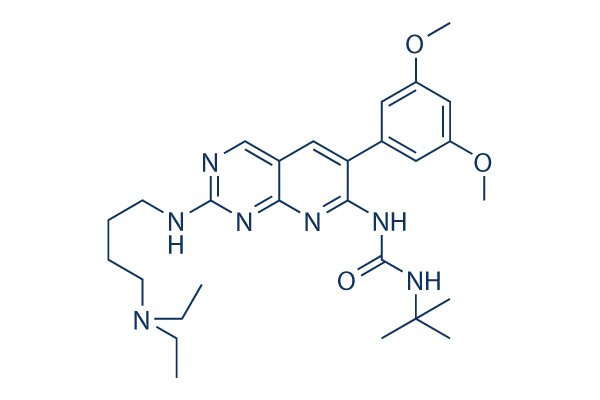It can be tightly regulated by a complex equilibrium amid differ ent professional and antiangiogenic factors secreted the two by tumor cells and by cells with the tumor microenvironment. VEGF and their receptors signify considered one of the most beneficial vali dated pathways involved in angiogenesis. VEGF stimulates the two proliferation and migration of endothe lial cells, enhances microvascular permeability, and is crucial for revascularization throughout tumor formation. It truly is frequently in excess of expressed in human tumors, and this really is frequently related with enhanced vascular density and much more aggressive clinical behavior. VEGF A and its principal receptor, VEGFR2 KDR, are critical members of this family and widespread targets of antiangiogenic agents. Platelet derived growth aspect and their recep tors perform also a critical role in angiogenesis regulation by exerting important control functions selelck kinase inhibitor in mesenchymal cells through advancement.
PDGF is expressed by endothelial cells and acts in the paracrine manner by recruiting PDGFR expressing cells, this kind of as pericytes and smooth muscle cells, on the producing vessels, thus selleck chemicals VX-702 improving pericyte coverage and vessel perform. PDGF signaling promotes cell migration, survival and proliferation and indirectly regulates angiogenesis by inducing VEGF tran scription and secretion. Mutations involving up regulation of PDGF and or PDGFR, too as PDGFR dependent development stimulation, are already docu mented in a amount of reliable tumors and hematological malignancies, suggesting a probably purpose of this pathway in carcinogenesis. Also, agents antagonizing PDGFR mediated signaling have also demonstrated antineoplastic activity in preclinical designs and in clin ical trials, together with some conducted in sufferers with CRC. Nonetheless, several other medication also focusing on these pathways have failed to prove a substantial posi tive impact to the final result of individuals with CRC.
The biological grounds for these discordant success are not very well understood. Consequently, and in spite of their undeniable accomplishment, only a small proportion of individuals do truly benefit from antiangiogenic agents, and trustworthy equipment to pro spectively determine which individuals are far more likely to advantage are scarce. Within this situation, efforts  to unravel the intricate molecular pathways governing tumor angiogen esis are certainly essential for progress for being manufactured. While in the present research, we sought to evaluate the incidence of genetic polymorphisms of a few of the key gamers of angiogenesis, such as VEGFR 2, PDGFR and PDGFR B, and their likely influence in CRC biology. With this particular function we sequenced the tyrosine kinase domains of these receptors in 8 CRC cell lines and in 92 tumor samples of individuals with colorectal adeno carcinoma. Correlations of encountered genetic variables with protein expression in cell lines, also as with clin icopathological capabilities and survival of these sufferers had been also analyzed to assess their possible biological and clinical implications.
to unravel the intricate molecular pathways governing tumor angiogen esis are certainly essential for progress for being manufactured. While in the present research, we sought to evaluate the incidence of genetic polymorphisms of a few of the key gamers of angiogenesis, such as VEGFR 2, PDGFR and PDGFR B, and their likely influence in CRC biology. With this particular function we sequenced the tyrosine kinase domains of these receptors in 8 CRC cell lines and in 92 tumor samples of individuals with colorectal adeno carcinoma. Correlations of encountered genetic variables with protein expression in cell lines, also as with clin icopathological capabilities and survival of these sufferers had been also analyzed to assess their possible biological and clinical implications.
Phosphorylase Signal
Phosphorylase kinase is a 1.3 MDa hexadecameric holoenzyme.
